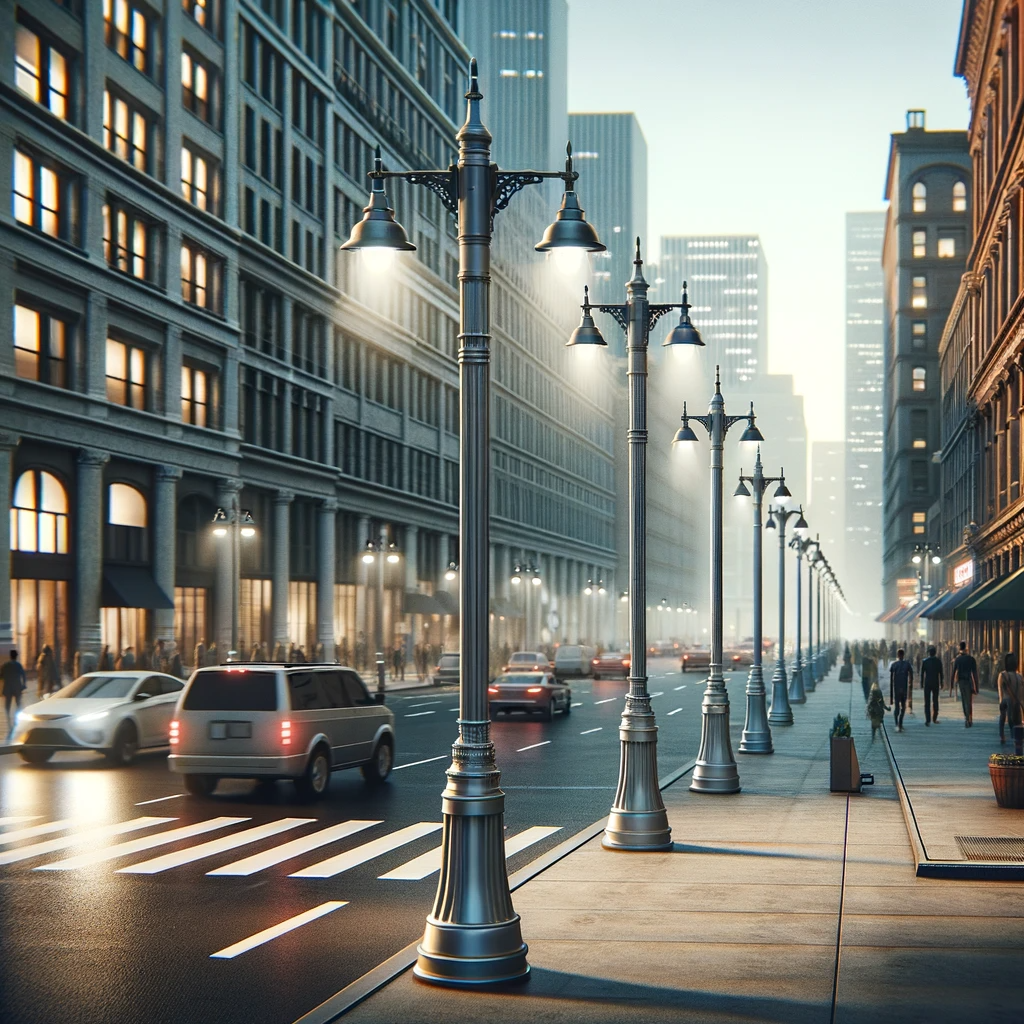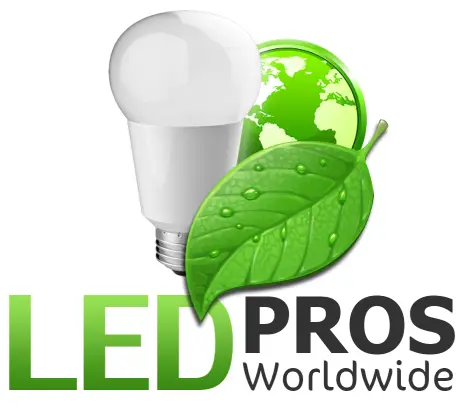Commercial LED light poles are transforming outdoor illumination in urban and industrial landscapes. These advanced lighting systems are rapidly replacing traditional street lamps, offering superior performance in parking lots, parks, and pedestrian walkways. This article delves into the specifics of commercial LED light poles, exploring their components, materials, designs, and the numerous benefits they bring to outdoor lighting projects.
Understanding Commercial LED Light Poles
Commercial LED light poles are tall structures designed to support LED luminaires at significant heights above ground level. They represent a substantial improvement over conventional lighting technologies, offering enhanced energy efficiency, longer lifespan, and improved light quality. These modern lighting solutions are reshaping how we illuminate outdoor spaces, providing better visibility and safety while reducing energy consumption and maintenance costs. Read more about What Are The Best Outdoor LED Pole Lights? here
Components of a Commercial LED Light Pole
A commercial LED light pole consists of several key components:
1. The Pole: The main structural element that provides height and support. Read more about How Tall is a Commercial Light Pole? here.
2. The Fixture: Houses the LED lights and optical systems.
3. The Base: Provides stability and anchoring for the entire structure.
4. Electrical Components: Includes drivers, wiring, and control systems that power and regulate the lights.
Material Selection for Commercial Pole Lights Outdoor
The choice of material for commercial light poles is crucial, as it affects durability, maintenance requirements, and overall performance. Let’s examine the most common materials used:
Steel Poles: Strength and Durability
Steel poles offer exceptional strength and durability, making them suitable for areas with harsh weather conditions or high wind loads. They’re often galvanized or powder-coated to resist corrosion, ensuring a long service life.
Aluminum Poles: Lightweight and Corrosion-Resistant
Aluminum poles are prized for their lightweight nature and natural corrosion resistance. They’re particularly well-suited for coastal environments where salt air can accelerate corrosion in other materials. Their lighter weight also simplifies installation and reduces shipping costs.
Fiberglass Poles: Versatility and Non-Conductivity
Fiberglass poles offer a unique combination of strength, lightweight design, and electrical non-conductivity. They resist corrosion and weathering, making them a versatile choice for various commercial applications, especially in areas with electrical hazards or extreme weather conditions.
 |
Pole Designs for Commercial LED Light Poles
The design of commercial LED light poles can significantly impact both aesthetics and functionality. Here are some popular designs:
Fluted Poles: Architectural Elegance
Fluted poles feature vertical grooves along their length, adding visual interest and architectural flair. They’re often chosen for upscale commercial developments or historic districts where aesthetics are a priority.
Tapered Poles: Modern Efficiency
Tapered poles have a wider base that narrows towards the top, providing enhanced stability and a contemporary look. This design efficiently distributes weight and wind loads, making it suitable for taller installations.
Round Poles: Traditional Reliability
Round poles offer a classic, versatile design that fits well in various settings. Their smooth profile minimizes wind resistance and provides a clean, unobtrusive look.
Square Poles: Contemporary Edge
Square poles bring a modern, urban aesthetic to lighting installations. They’re often selected for contemporary architectural designs and can accommodate multiple fixtures for complex lighting arrangements.
Installation Methods for Commercial LED Light Poles
Proper installation is crucial for the safety and longevity of commercial LED light poles. Two primary methods are commonly used:
Direct Burial Poles: In-Ground Stability
Direct burial poles are installed by embedding a portion of the pole directly into the ground. This method provides excellent stability, especially in high-wind areas, but requires careful consideration of soil conditions and drainage.
Anchor-Based Poles: Versatile Mounting
Anchor-based poles are mounted on concrete foundations using anchor bolts. This method allows for easier maintenance and potential relocation if needed. It’s particularly useful in areas with poor soil conditions or where underground utilities are a concern.
Advantages of Commercial LED Light Poles
Commercial LED light poles offer numerous benefits over traditional lighting systems:
1. Energy Efficiency: LED technology significantly reduces energy consumption, leading to lower operational costs.
2. Longevity: LED fixtures have a much longer lifespan than traditional lighting, reducing replacement frequency and maintenance costs.
3. Improved Illumination: LEDs provide clearer, more uniform light distribution, enhancing visibility and safety in outdoor areas.
4. Reduced Maintenance: The longer lifespan and durability of LED systems translate to less frequent maintenance requirements.
5. Environmental Impact: Lower energy consumption and reduced waste from fewer replacements contribute to a smaller environmental footprint.
FAQs: Common Questions About Commercial LED Light Poles
Q: What is the typical lifespan of commercial light poles?
A: With proper maintenance, the poles themselves can last 20-30 years, while LED fixtures often have a lifespan of 50,000 to 100,000 hours of operation.
Q: How do commercial light poles compare in cost to traditional lighting?
A: While initial costs may be higher, the long-term energy savings and reduced maintenance expenses often make LED light poles more cost-effective over their lifespan.
Q: Can existing light poles be retrofitted with LED fixtures?
A: In many cases, retrofitting existing poles with LED fixtures is possible and can be a cost-effective way to upgrade lighting systems without full pole replacement.
Q: How do commercial LED light poles perform in extreme weather?
A: Most commercial LED light poles are engineered to withstand various weather conditions, including high winds and temperature extremes. The specific resilience depends on the pole material and design.
Q: Are there dark sky compliant options for commercial LED light poles?
A: Yes, many LED fixtures are designed to be dark sky compliant, minimizing light pollution and upward light spill while maintaining effective ground-level illumination.
Conclusion: Illuminating the Future of Outdoor Lighting
Commercial LED light poles represent a significant advancement in outdoor lighting technology. By combining energy efficiency, longevity, and superior illumination quality, these lighting systems offer compelling benefits for a wide range of commercial applications. As urban development continues and energy efficiency becomes increasingly important, commercial LED light poles will play a crucial role in shaping the future of outdoor illumination.
When selecting commercial pole lights outdoor, it’s essential to consider factors such as material durability, design aesthetics, energy efficiency, and specific site requirements. By carefully evaluating these aspects, property managers and urban planners can implement lighting solutions that not only meet current needs but also provide long-term value and performance.
As technology continues to evolve, we can expect further innovations in commercial LED lighting, potentially incorporating smart controls, adaptive lighting systems, and even more energy-efficient designs. These advancements will continue to enhance the safety, efficiency, and aesthetics of our outdoor spaces, illuminating the path toward a brighter, more sustainable future.
Your message has been sent
